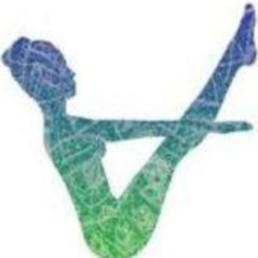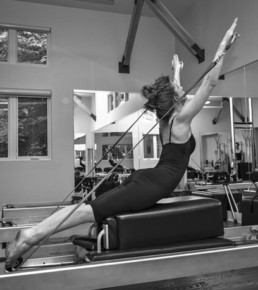A Brief Guide to Pilates Apparatuses Part 1
If you’re a newcomer to Pilates, you might be intimidated by all the different apparatuses involved in the practice. This is a normal response, as the equipment probably looks nothing like the stuff you’re accustomed to seeing at ordinary fitness centers. But a little knowledge goes a long way toward dispelling any anxiety or hesitancy you might have about walking into a Pilates studio, signing up for a class, and using the equipment, so here is a brief guide you can read to familiarize yourself with some of the most common Pilates apparatuses.
The Reformer
Every Pilates studio worth its salt will have a couple of Reformers on hand for practitioners to use. The Reformer is a flat bed that features a sliding carriage and various attachments, such as bars, cables, and straps. The Reformer allows users to perform a full body workout that targets large and small muscle groups in the core, arms, back, and legs. The amount of resistance applied to each exercise can be adjusted for an easier or more challenging workout depending on the day’s goals and helps yield excellent results with consistent use.
The Wunda Chair
Originally designed by Joseph Pilates to serve double duty as exercise apparatus and functional furniture, the Wunda Chair is another staple in modern Pilates studios. It’s essentially a low, boxlike contraption with a seat area and a pedal board with two adjustable springs. Despite the Wunda Chair’s simple appearance, it can be used for a surprisingly wide variety of leg and ab exercises at different resistance levels.
The Ladder Barrel
With ladder rungs on one side and an arced, padded half-barrel on the other, the Ladder Barrel apparatus is a fixture in any Pilates studio. This apparatus is ideal for the kinds of stretching, toning, and lengthening exercises that help give Pilates practitioners the long and lean look they desire. There are a number of core and ab exercises that can be completed on the Ladder Barrel as well, including crunches and side sit-ups.
Now that you know a little bit about the purpose and function of three of the most common Pilates apparatuses, we hope you’ll be more confident about taking the next step and joining your first class!
Key Differences Between Pilates and Yoga
Non practitioners of Pilates and Yoga often confuse the two disciplines or think they’re just different names for essentially the same types of exercise. But this is not the case at all. While it’s true that both Pilates and yoga are effective for injury rehabilitation as well as general health, there are several key differences between them, including the following:
Origin
Pilates was developed by a physical trainer named Joseph Pilates in the mid-1920s. Pilates served as a nurse during World War I and came up with many “minimal equipment” strengthening and rehabilitation routines to help the injured soldiers he encountered.
Although there is no clear origin story for yoga, it is at least 5,000 years old and is believed to have been developed by ancient civilizations in India. There are many different schools of yoga, with each favoring different techniques and practices aimed at helping the practitioner achieve higher spiritual and physical awareness.
Focus
One of the main focuses of Pilates is strengthening the body, with special emphasis placed on the core. With a strong core, practitioners can exert greater control over their physical movements while simultaneously improving total balance, strength, and flexibility. This focus on the core makes Pilates an ideal training method for athletes in all sports, including practitioners of yoga.
One of the main focuses of yoga is to bring the practitioner’s mind, body, and spirit into harmony. Yoga is used for healing physical ailments as well as relieving mental stress and promoting peace with one’s true nature.
Methods
Pilates workouts are quite varied, but typically consist of both mat work and exercise machine work. The mat work involves movements such as leg circles, scissor kicks, rollups, and curls, all of which engage the core and require efficient breathing techniques in order to be performed properly. The Pilates reformer machine is fitted with springs, straps, and bars that allow users to strength train with tailored resistance levels, using their own body weight.
Yoga workouts most often take the form of getting into and holding various poses. This mat work uses body weight resistance to strengthen joints and increase flexibility. Controlled breathing is also a critical part of practicing yoga.
As you can see, although Pilates and yoga share some similarities, they also differ in notable ways. If you’d like to learn more about this topic, please visit ab-solutepilates.com today.


